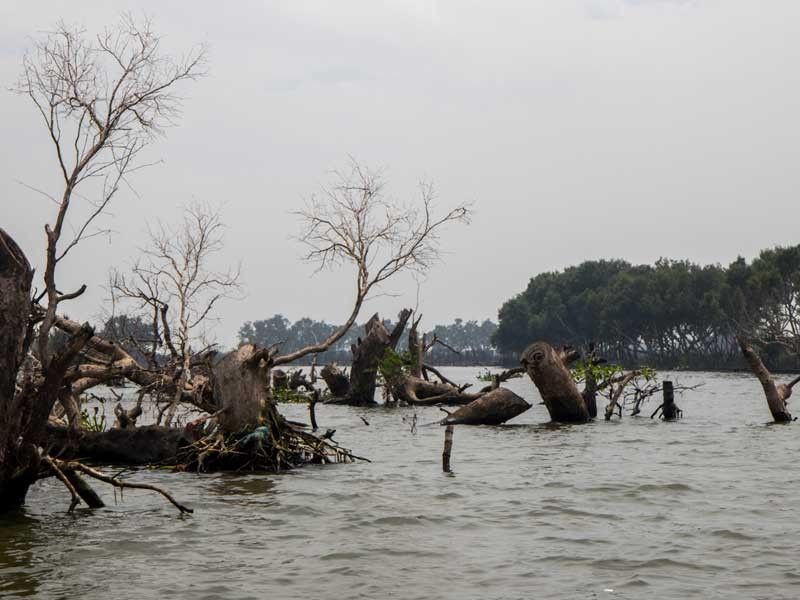It will take decades to replace mangroves cut down or built over, groups warn

MANILA, Philippines — Mangroves grow slowly and planting young seedlings cannot substitute for cutting down those that have had years to grow, groups opposed to an airport project in Bulakan town in Bulacan said over the weekend.
In a joint statement, AGHAM (Advocates of Science and Technology for the People) Diliman and PAMALAKAYA (Pambansang Lakas ng Kilusang Mamamalakaya ng Pilipinas) said that there is a logging ban on mangrove trees for that reason.
"[It is the] characteristic slow growth rate of most mangrove species that makes them really hard to replace. The extensive root system of mangroves that serves as protection for communities from floods, erosions and storm surges took decades to be established," they said.
"Young seedlings or propagules of mangroves with no extensive root system yet are prone to harsh conditions in the coast [like] winds, currents and barnacle infestation. This hampers their growth and may result to high mortality rates prior to maturity," they also said.
NewsX: Fed by the waters
The groups issued the statement in response to a project by airport project proponent San Miguel Corp. and the local government of Hagonoy, Bulacan to plant 25,000 mangroves in 10 hectares of the town's coastal areas.
According to state-run Philippine News Agency, around 190,000 mangroves will be planted in more than 76 hectares across Bulacan and Central Luzon as a solution to flooding in those areas.
"This project is a major component of our strategy to help solve flooding in Bulacan once and for all. Mangroves are essential to protect against flooding," the PNA report quotes SMC president Ramon Ang as saying.
Jerwin Baure, a licensed fisheries technologist and who is spokesperson for AGHAM Diliman, said that the newly-planted mangroves cannot, in the short-term, replace mangroves already cut down or that will be affected by reclamation for the New Manila International Airport.
AGHAM Diliman said that around 600 mangroves had previously been cut down in Barangay Taliptip in Bulakan, where a handful of residents in the path of the planned airport are pushing for proper relocation and livelihood assistance.
The groups said that aside from affecting biodiversity in Manila Bay, reclamation for the airpory would also affect the role of the mature mangrove forests in mitigating climate change.
"[It] will take another set of decades to replace the existing mangroves, thus leaving coastal communities more vulnerable to hazards, and the ecosystems altered for years," Baure said.
"The time is running out for our vulnerable communities due to the hazards brought by climate change, and in this context, no wide-scale planting activity can justify a wide-scale destruction of existing mangrove forest," he also said.
- Latest
- Trending































